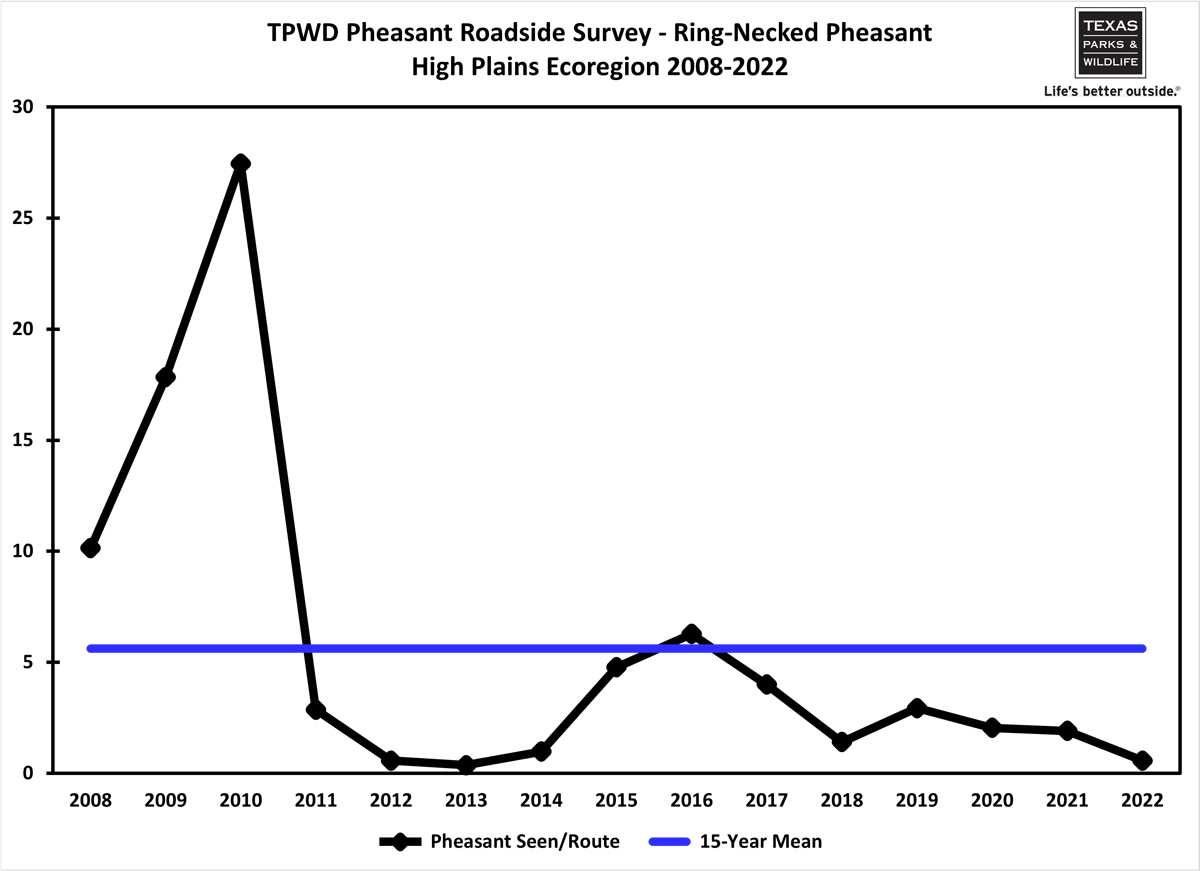By Jessica Domel
Multimedia Reporter
Pheasant hunting will likely be more challenging for Texas hunters this year.
The season opens Saturday, and the Texas Parks and Wildlife Department (TPWD) is reporting a pheasant population about 90% below the 15-year average.
“West Texas has not been immune to the ongoing drought conditions we’ve seen across the state for some time. Despite some recent relief for much of the state, that really didn’t help us out during the nesting season earlier this year or in the past few years,” John McLaughlin, TPWD upland game bird program leader, told the Texas Farm Bureau (TFB) Radio Network.
The drought led to poor habitat conditions, in general, across the High Plains and limited grass growth.
“We’ve seen a decline in the grassland protection programs in the farm bill, and changing commodity prices have changed what crops have been planted over the last few years,” McLaughlin said. “Unfortunately, it’s going to be rather tough sledding for hunters this year, especially for pheasant hunters.”
In 2021, TPWD biologists noted an average of two pheasants per route in the annual pheasant roadside survey in the High Plains.
This year, they noted about half a bird per route with a margin of error.
“The reality is, looking at the landscape, farmland and grassland, the quality is definitely not as good,” McLaughlin said. “We’re definitely in the doldrums, as it were, this year.”
Hunters hoping to bag a pheasant or two might want to try the northern Panhandle, where McLaughlin said prospects might be better.
“They are probably going to be walking a few extra miles to get into the birds,” McLaughlin said.
Hunters are likely to have the best luck finding pheasants where grasslands butt up against farmland or in an area where there is taller grass or shrub cover.
“(The pheasants) are going to be looking for some source of shelter during the winter months, and so they’re probably going to be attracted to those brushy areas,” McLaughlin said. “Anywhere you’ve got this sort of intersection of grassland and farmland that also has brush cover is probably going to be good. Areas around active playas—playas that have water or had water in the last couple of years—where there is decent grass growth, that’s also somewhere we might find birds.”
Only 37 counties have a pheasant hunting season: Armstrong, Bailey, Briscoe, Carson, Castro, Childress, Cochran, Collingsworth, Cottle, Crosby, Dallam, Deaf Smith, Donley, Floyd, Gray, Hale, Hall, Hansford, Hartley, Hemphill, Hockley, Hutchinson, Lamb, Lipscomb, Lubbock, Moore, Motley, Ochiltree, Oldham, Parmer, Potter, Randall, Roberts, Sherman, Swisher, Wheeler and Wilbarger.
There were no changes to pheasant hunting regulations this year.
The daily bag limit is three males. The possession limit is nine.
“The males are pretty distinguishable by their plumage or the feather coloration on their bodies. They tend to have that more brilliant cover versus those females, those hens that have that duller, more mottled muted brown color,” McLaughlin said.
Hunting hens is prohibited.
“You need to have proof of sex attached to your pheasant while you’re transporting it back to your house or transporting it to wherever, and that includes one leg, including the spur attached to the bird, or just keeping the entire plumage or all the feathers attached to that carcass until you get that bird to its destination,” McLaughlin said.
Legal shooting hours are one-half hour before sunrise to one-half hour after official sunset.
Hunters must have a valid Texas hunting license and an upland game bird endorsement or stamp. Those hunting on public land must have a public hunting permit, as well.
Hunters are not required to report their harvest, but it can be helpful to the department.
“Anyone who buys a super combo license or buys an upland game bird stamp on its own are eligible to receive our small game harvest survey, usually in the following spring. We encourage people, if they get nominated through email or through regular postal mail to get that survey, to fill that out because that does help us track hunters and harvest from year to year,” McLaughlin said.
Hunters can also report their harvest on the My Texas Hunt Harvest app or website.
Pheasant season ends Jan. 1, 2023.

